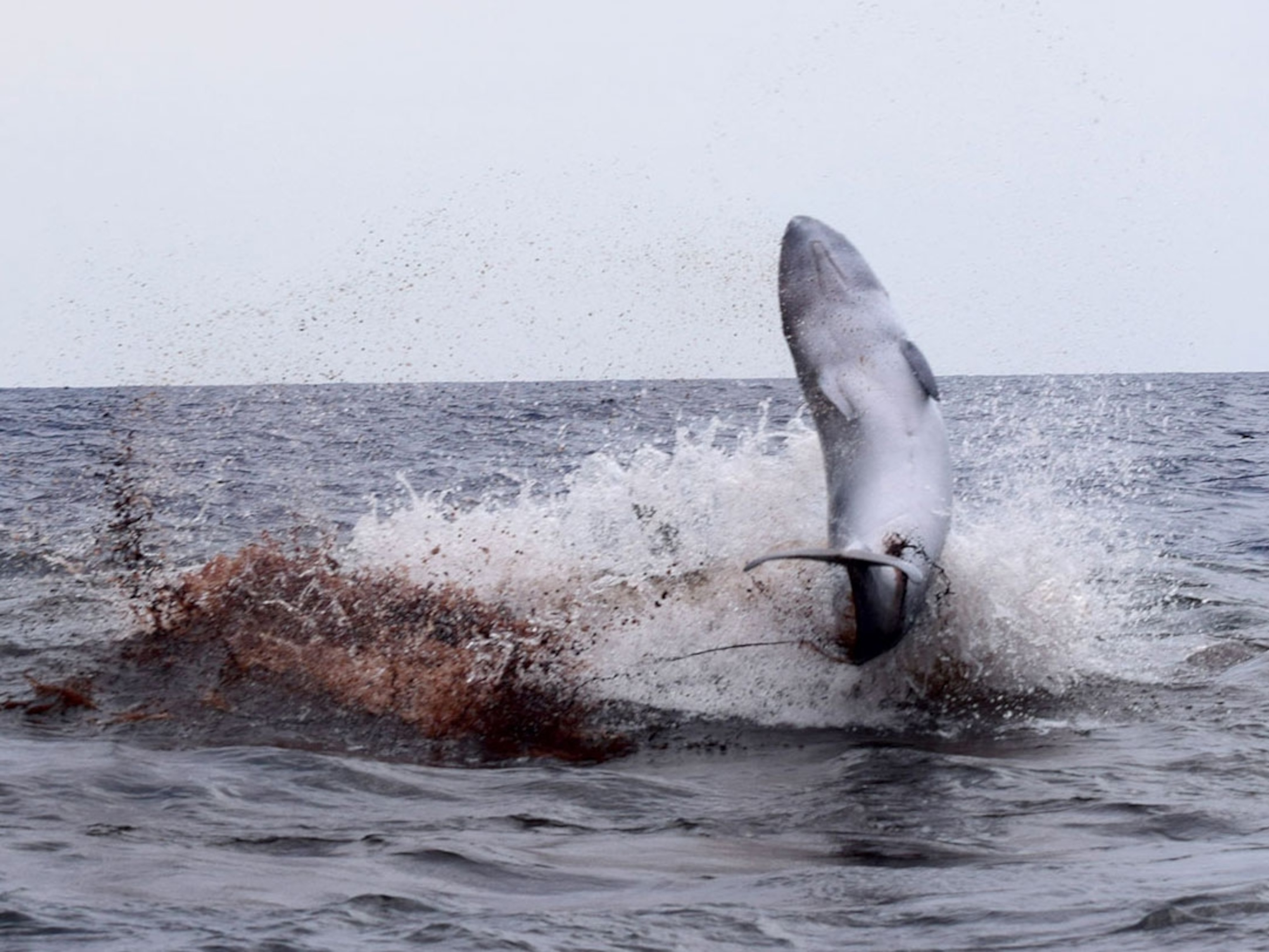
Cannibal Sea Lion Kills and Eats Pup—Never Before Seen
The unprovoked attack on Russia's Medny Island baffled scientists.
In a never-before-seen instance of cannibalism, a massive male sea lion was observed brutally killing and eating a pup—and is suspected of doing the same to several more.
The baby sea lion did nothing to provoke the attack, and the bull gained no obvious advantage from the death, scientists report in the journal Marine Mammal Science.
A surprised researcher on Russia’s Medny Island (map) observed the Steller sea lion grabbing a pup, then flinging, biting, and whipping it back and forth. After the pup died, the bull tore pieces off the carcass and ate them, eventually swallowing the stomach and other organs before casting the mutilated body aside. ("Watch: Why This Sea Lion Dragged a Girl Into the Sea.")
No one has ever reported cannibalism in the Steller, the largest species of sea lion. Even infanticide, which is relatively common among mammals, is extremely rare in the species.
“Everybody was talking about it,” study co-author Vladimir Burkanov, a marine mammal biologist with the Russian Academy of Sciences and the U.S. National Oceanic and Atmospheric Administration, which funds his research on the Steller.
People were saying, "'The bull killed the pup! Why did he kill the pup? It was a good pup!'"
Blood-Stained Killer
Study co-author Anna Kirillova of North Pacific Wildlife Consulting witnessed the attack in 2014; the research team discovered the mangled carcasses of two more pups in 2014 and a third in 2015. (Read "Friends For Dinner: Why Some Animals Become Cannibals.")
Every time the team found a savaged pup, the same bull that had killed and eaten the first pup was seen “covered in blood,” according to the study.
It’s not clear whether the bull ate any of the three additional carcasses, but Burkanov considers it likely. Even so, the bull did not devour enough of any single pup to sate its appetite, he says. Steller bulls weigh up to 2,500 pounds, and pups weigh between 35 and 50 pounds.
Highly territorial Steller bulls routinely have “spectacular” fights with other bulls, even killing rivals that intrude on their turf, Burkanov says. (Learn more about Steller sea lions from their own perspective.)
But males are generally tolerant of pups, says Andrew Trites, a marine mammal biologist at the University of British Columbia who was not involved with the study.
“I've never seen anything like this," he says.
Adding to the mystery of the bull’s motive, the killing would not have made the pup’s mother—which was out to sea during the slaughter—sexually receptive, Trites says. Steller bulls also don’t care for pups, so he wasn’t saving himself any effort either.
Steller mothers staunchly defend pups less than a week old. But the cannibalized pup, which was nine days old, would've had no protection from its mother even if she had been present, Burkanov notes.
Bad to the Bone
Scientists know of only two other Steller bulls that committed infanticide, and neither involved cannibalism. On Medny Island in 1991, a bull snatched a pup with its teeth and smashed it against a rock. In that case, the bull had been menacing a gull, and when the bird flew away, the bull likely transferred its aggression to a nearby baby. (Read about hippos and other animal cannibals.)
The cannibalistic bull had no such excuse. Burkanov chalks up the killing spree to personality: Some bulls are calm, others more active, he says, and this one’s behavior is simply abnormal.
Trites agrees, likening the bull to the “the Hannibal Lecter of the sea lion world. … What you’re seeing here is an extremely psychotic personality.”
No dismembered pups were found in 2016, which is good news for a species mysteriously declining in much of its habitat—the International Union for Conservation of Nature considers the Steller near threatened by extinction.





